The Kavanagh-Putland Index measures the ratio of property sales to GDP. This metric is considered useful because in times of speculative fervour, investors flip properties to one another, increasing the total value of sales on an annual basis. When real estate markets tank, sales inevitably fall as potential buyers stand by the wayside waiting for further price falls. The ratio peaked in 2004 after housing prices jumped in the years previous.
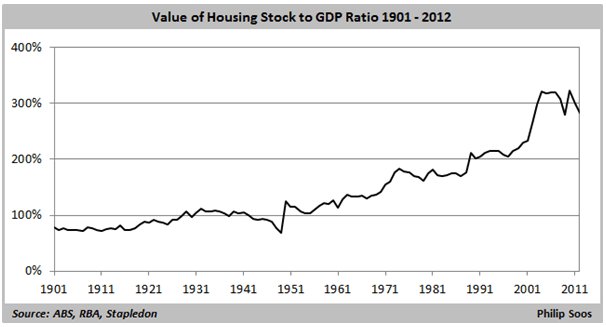
The value of housing stock to GDP has likewise moved in the same direction as house prices to inflation and land values to GDP. It is the land component rather than the dwellings that has increased in value over GDP.
Advertisement
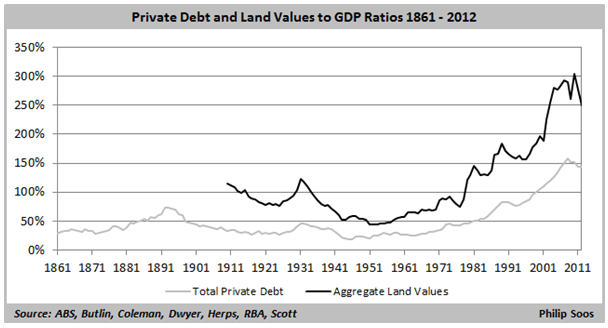
The primary determinant of the boom bust cycle in the land market is availability of credit/debt used to speculate on rising capital values of real estate. While data on private debt goes back to 1861, aggregate land values only begin in 1910. Debt peaked in 1893, driving a colossal commercial land bubble that burst, causing the worst depression in Australia’s recorded history. Again the same occurred during the 1920s, with the same result. It took until the 1970s for the debt cycle to assert itself once again, with one boom and bust after another. Debt reached the highest peak on record in 2008, driving the largest land boom on record.
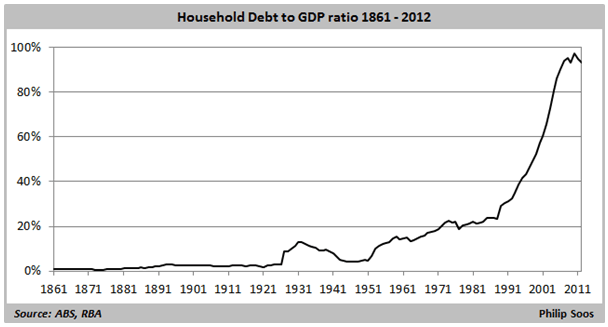
Unsurprisingly, the cause for the massive rise in housing prices and land values, along with net rental income losses, is the colossal increase in household debt, primarily composed of mortgage debt. It has more than quadrupled since 1988, rapidly accelerating during the 90s and 2000s. The ratio peaked in 2010 as did housing prices, which is clearly no coincidence.

As household debt has climbed, so too has debt as a percentage of household assets. The ratio will rise as housing prices continue to soften. It has tripled from 1990 through to 2008 before the GFC, falling and then resuming its upward climb.
Advertisement
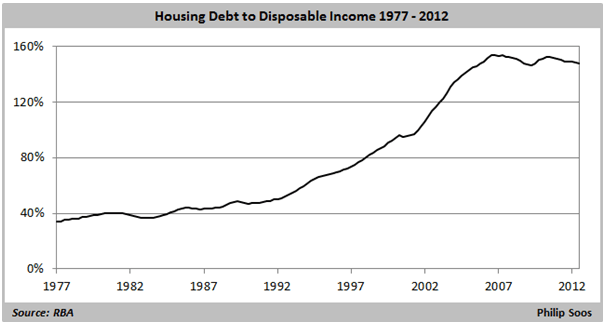
The same has occurred with housing debt to disposable income, tripling over the same time period.
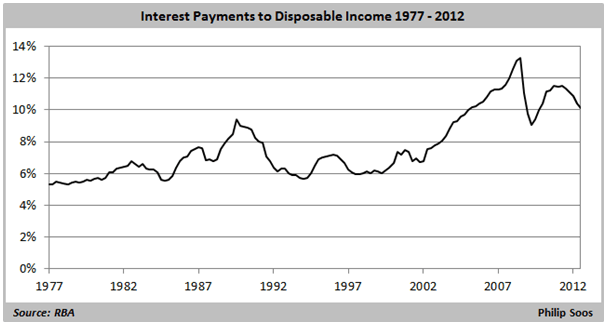
Discuss in our Forums
See what other readers are saying about this article!
Click here to read & post comments.
4 posts so far.